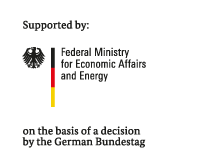Energy Strategy Reviews Volume 25, August 2019, Pages 75-85 | Details
Many existing energy system models rely on input data available at country-level, or at the level of administrative divisions. However, there is usually no correlation between the distribution of data such as solar radiation, wind speed, and electrical load on one hand, and the administrative divisions on the other hand. The goal of the research is to measure the impact of the shape of model regions on the results of system optimization models. A novel clustering methodology for high-resolution data is presented and applied to define new regions for an energy system model which optimizes expansion planning and unit commitment. The new model regions take into account the bottlenecks in the transmission system and their effect on the expansion of renewable energy sources. We compare the obtained energy mixes, new capacities, and curtailment levels against a model using administrative divisions. The results show discrepancies between the models in the case of a high share of variable renewable energy, and quantify the impact of the distribution of load, wind and solar resources on energy system models. Possible applications of the new model regions are discussed to emphasize their utility for modelers and policy-makers.

